Safely Working at Heights: How to be Hands-Free Using Hoist Buckets and Tool Pouches
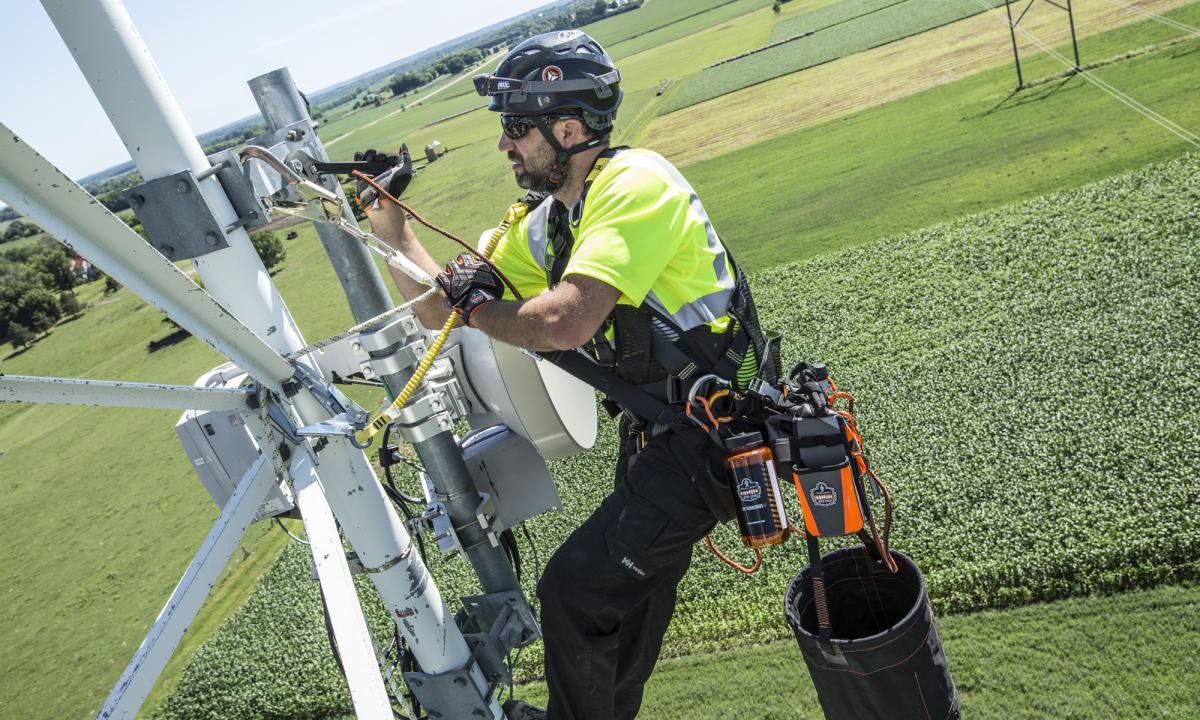
Most workers were trained to climb using the “Three Points of Contact Rule”, but how do they stay safe when tools and equipment need to go to heights along with them?
We’re all familiar with the old driving adage, two hands on the wheel at 10 and 2 (they really recommend more like 9 and 3 now, though…). And for the same reason hands-free driving is critical, hands-free climbing is equally critical—put most simply, there are lives at stake.
THE THREE POINTS OF CONTACT RULE
Most workers were trained to safely climb using the “Three Points of Contact Rule”—that is, keeping both feet and one hand (or both hands and one foot) stable when on the move. OSHA takes that guidance a step further in its Walking-Working Surfaces and Fall Protection Standards. The requirements in 1910.23 Ladders state:
- Each employee faces the ladder when climbing up and down
- Each employee uses at least one hand to grasp the ladder when climbing up and down
- No employee carries any object or load that could cause the employee to lose balance and fall while climbing up and down

Where hands-free climbing becomes more challenging are situations where tools need to be transported along with the worker. Considering that’s, well, most worksite scenarios—how do workers stay compliant when working at heights?
Enter… hoist buckets, tool pouches and tool holsters.
HOW TO COMPLY: SAFE CLIMBING WITH HOIST BUCKETS + TOOL POUCHES
While standard backpacks, tool belts and toolboxes certainly have their place on the ground or in truck beds, most are not properly rated for storing or tethering tools when working at heights. Hoist buckets and tool pouches are specifically designed and tested to safely store and support gear while it’s being lifted—making them a critical element in dropped object prevention, fall protection and general worksite organization.
Hoist Buckets vs. Tool Pouches + Holsters
An improvement on the ol’ bucket-rope combo, hoist buckets—considered “portable” containers—are designed to transport tools and equipment to elevated jobsites. The handle of the bucket (or, in some cases, a d-ring or carabiner affixed to the handle) is attached to a pulley system or other lifting element, allowing workers to safely lift and lower gear without being weighed down by it.
Hoist buckets are commonly made of either canvas or nylon and come in a variety of capacities. They may also include tethering points for affixing tool lanyards to the bucket and removable or affixed covers (more on that in a bit).
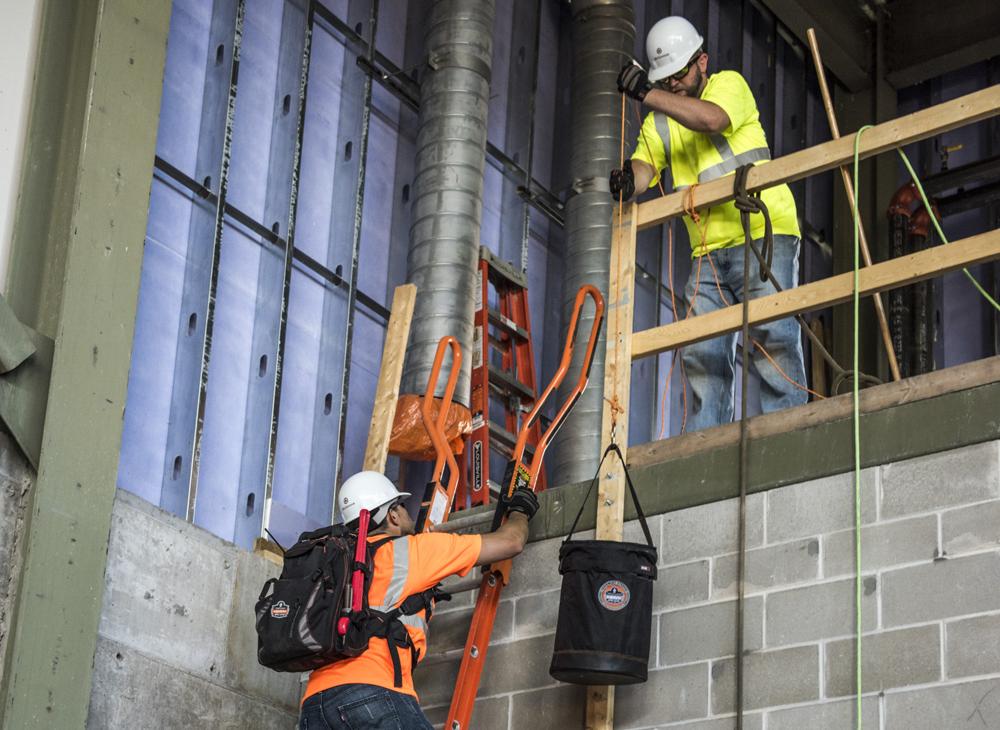
Tool pouches and tool holsters—considered “stationary” containers—are designed to be attached to worker fall protection, harnesses, tool belts or the structures being worked on itself. Smaller and lower capacity than hoist buckets, they keep tools and hardware accessible for work while also preventing spillage. Pouches will often feature covered tops and D-ring tethering points for tool lanyard attachment (while best practice is to limit the weight a worker carries, in many cases, tools need to be carried on their person).
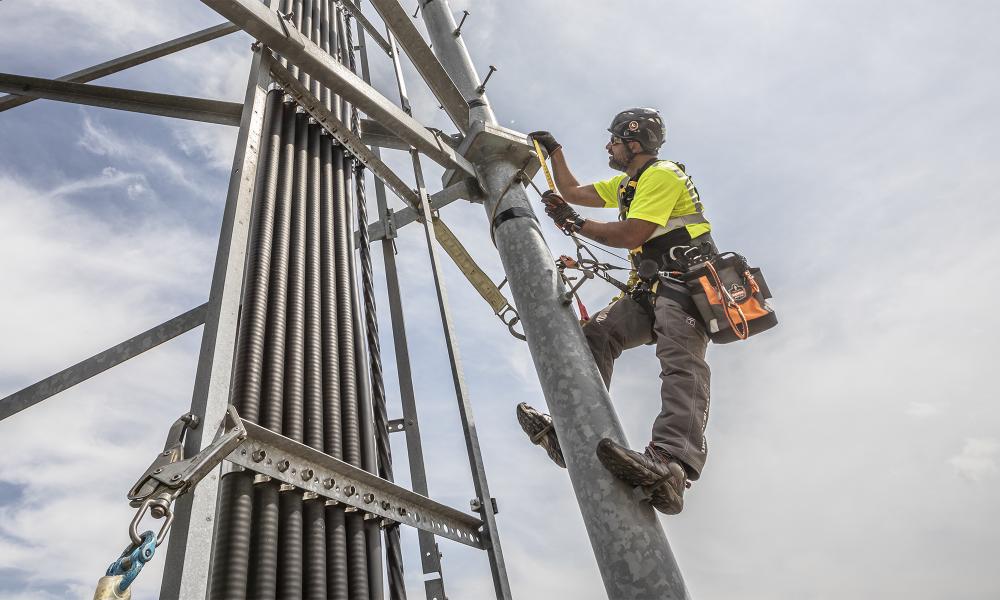
Hoist Buckets: Design + Testing Requirements
Hoist buckets, tool pouches and tool holsters must be engineered to support the weight of the intended gear. The entire bucket, pouch or holster is load-rated and tested as a system. A high confidence safety factor (5:1) means a bucket is statically rated to carry 100 pounds (45 kilograms) and has been tested to 500 pounds (277 kilograms) without failure. Additionally, any tethering points attached to the bucket or pouch should be dynamically drop tested at a 2:1 safety factor.

Beyond meeting testing requirements, the design of the bottom of the bucket, pouch or holster needs to hold up in tough work environments. While the main material secures contents inside, the bottom takes all the abuse—including tossed gear and being dragged on wet, dirty or rough surfaces. This is why you’ll often see container bottoms reinforced with additional fabric, leather or synthetic leather for added durability, abrasion and puncture resistance.
Hoist Buckets: Cover Criteria
To double down on safety, hoist bucket covers are recommended to prevent drills and hammers from raining down chaos on the jobsite below. But that doesn’t mean you can just throw plastic wrap over it and call it good. To meet safety requirements, covers need to match the following criteria:
- Be secure when closed and fastened
- Retain contents if the bucket or pouch is tipped or inverted
- Be convenient to secure and remove, even while wearing gloves or working in challenging work environments
- Should not itself create a falling hazard when opened
- Be statically tested at a 2:1 safety factor—a bucket rated to 100 pounds (45 kilograms) will be tested to 200 pounds (91 kilograms)
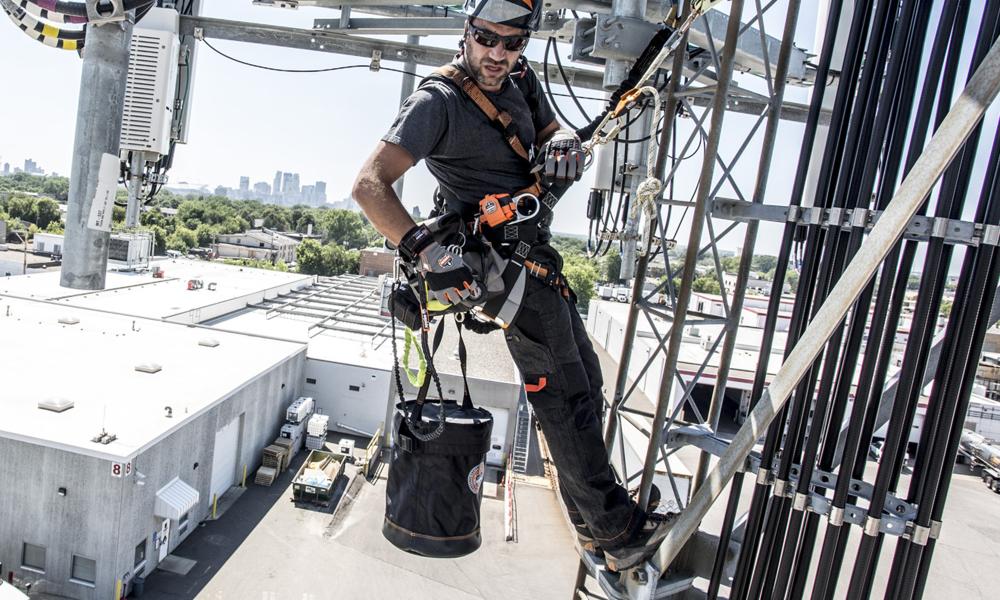
Are Hoist Buckets and Tool Pouches ANSI/ISEA 121-2023 Compliant?
As you may or may not know (but if you’re reading this blog, you probably should), ANSI/ISEA 121-2023 is the official dropped objects standard. The standard establishes minimum design, performance, labeling and testing requirements for solutions that prevent falling objects when working at height. Here are the five things a hoist bucket or tool pouch needs to meet ANSI/ISEA 121-2023:
- Secure Closure: Top prevents contents from spilling if tipped
- Lifting Mechanism: Secure attachment handle for safely lifting bucket to heights
- 121 Marked Labeling: Clearly states required working hoist bucket information including: maximum weight rating, manufacturer information and warnings
- Product Instructions: Includes installation illustrations, as well as use, care and replacement guidelines
- COC (Certificate of Conformity): Identifies where and when ANSI/ISEA 121-2023 testing occurred
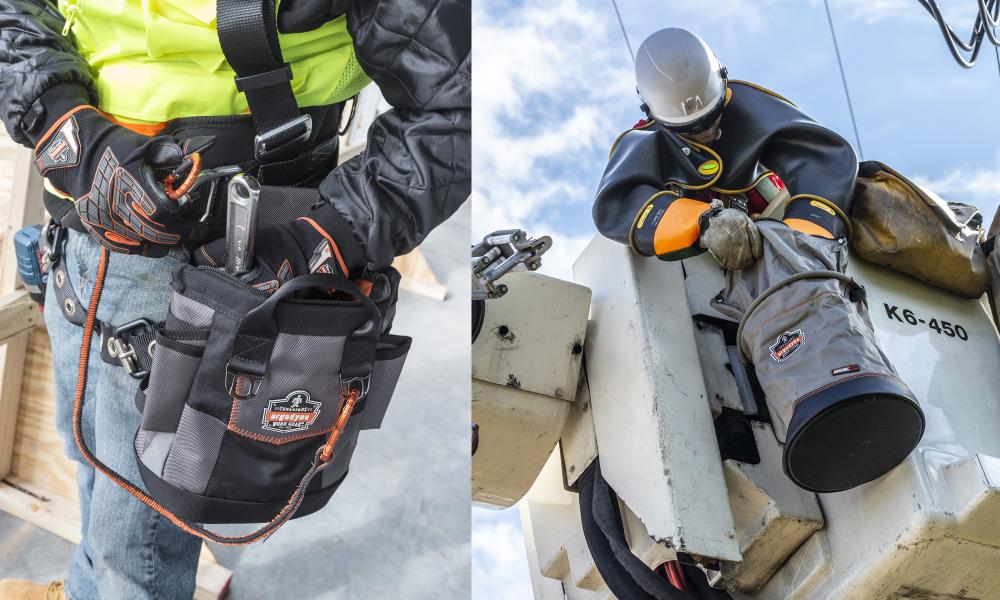
Considering the standard is relatively new (and hoist buckets and pouches have been staples across the industry for decades), most on the market today have not been tested to ANSI/ISEA 121-2023 safety requirements. To see if your hoist bucket makes the grade, download our free ANSI/ISEA 121-2023 compliance hoist bucket checklist.
TAKE SAFETY TO NEW HEIGHTS
Up to the hands-free climbing challenge? Elevate your at-heights workday with the entire line of Arsenal at-heights tool storage solutions, including some of the industry’s only ANSI/ISEA 121-2023 approved hoist buckets and tool pouches. (Okay, we’ll stop now before we make another pun…) .

